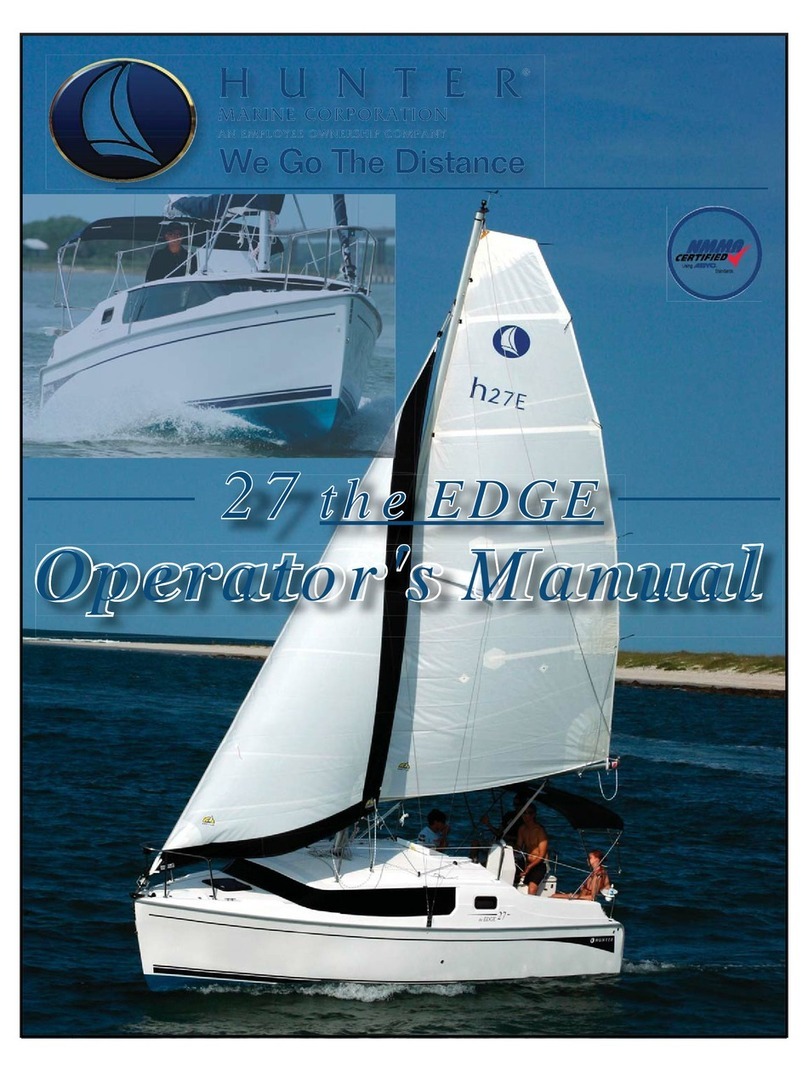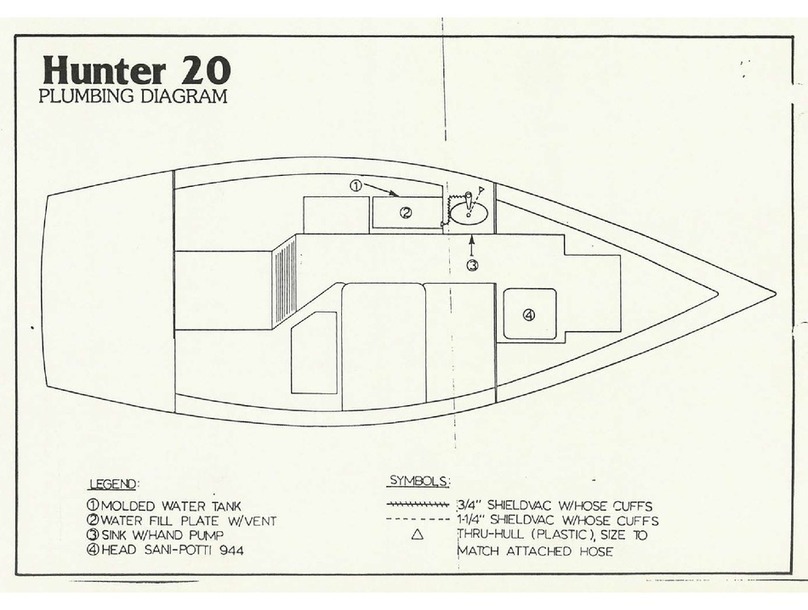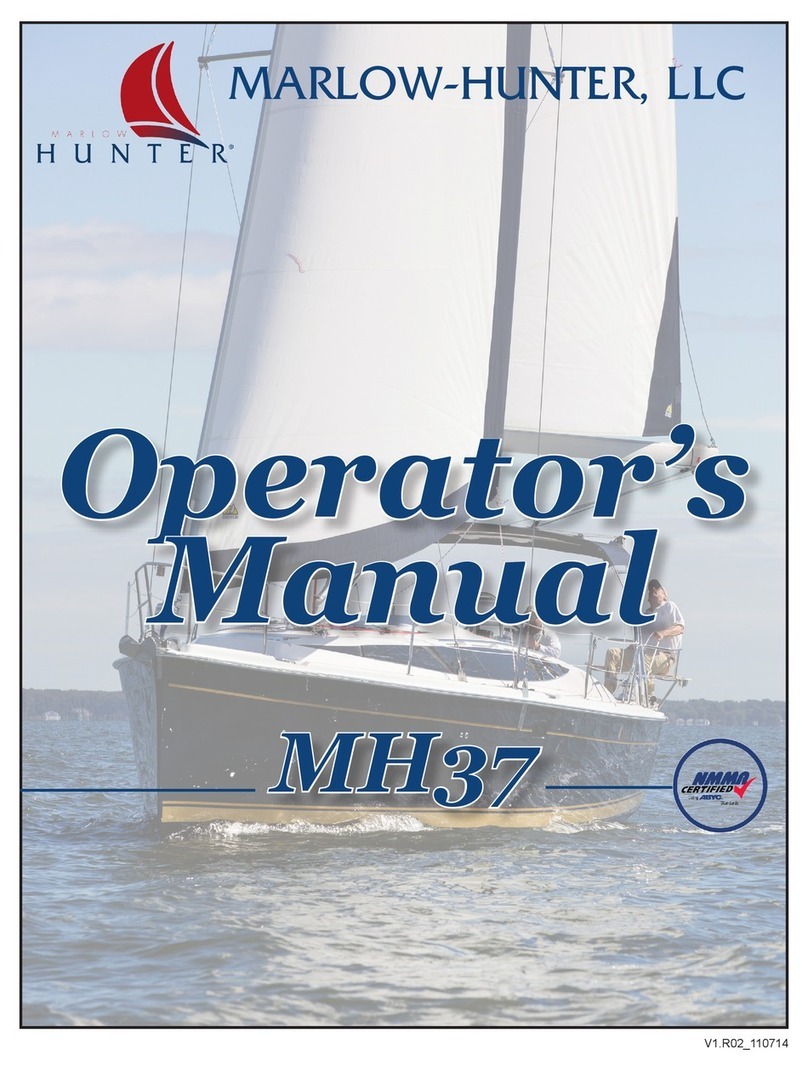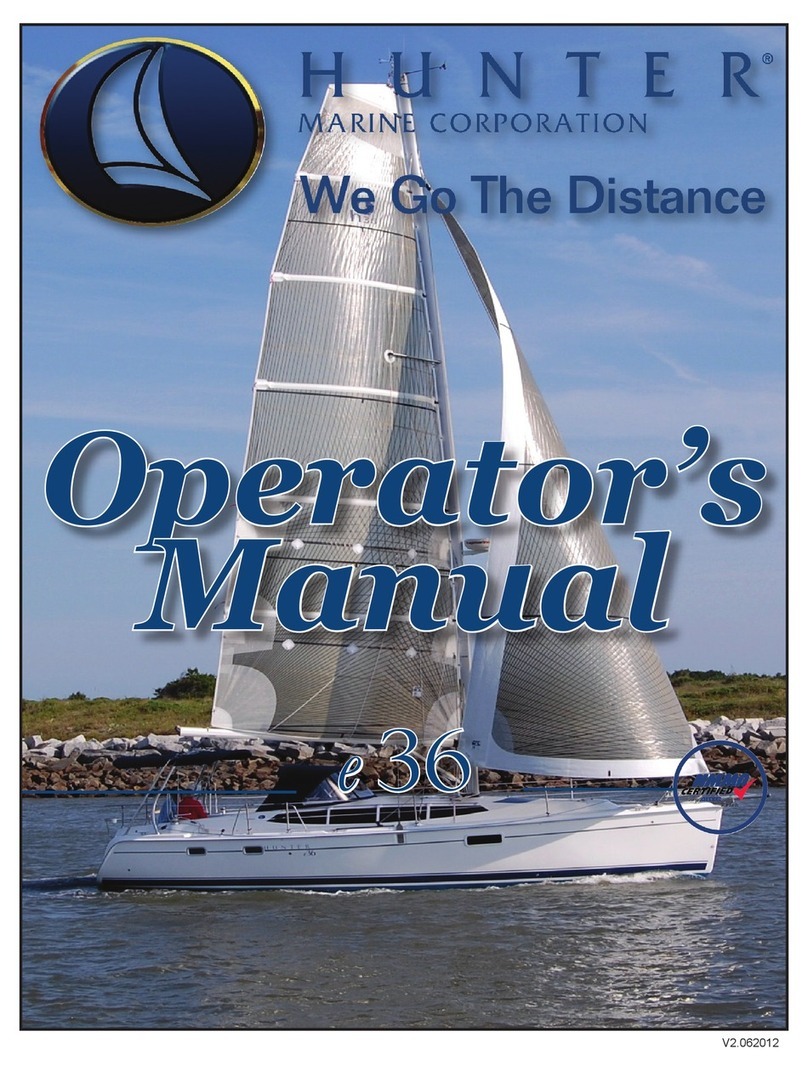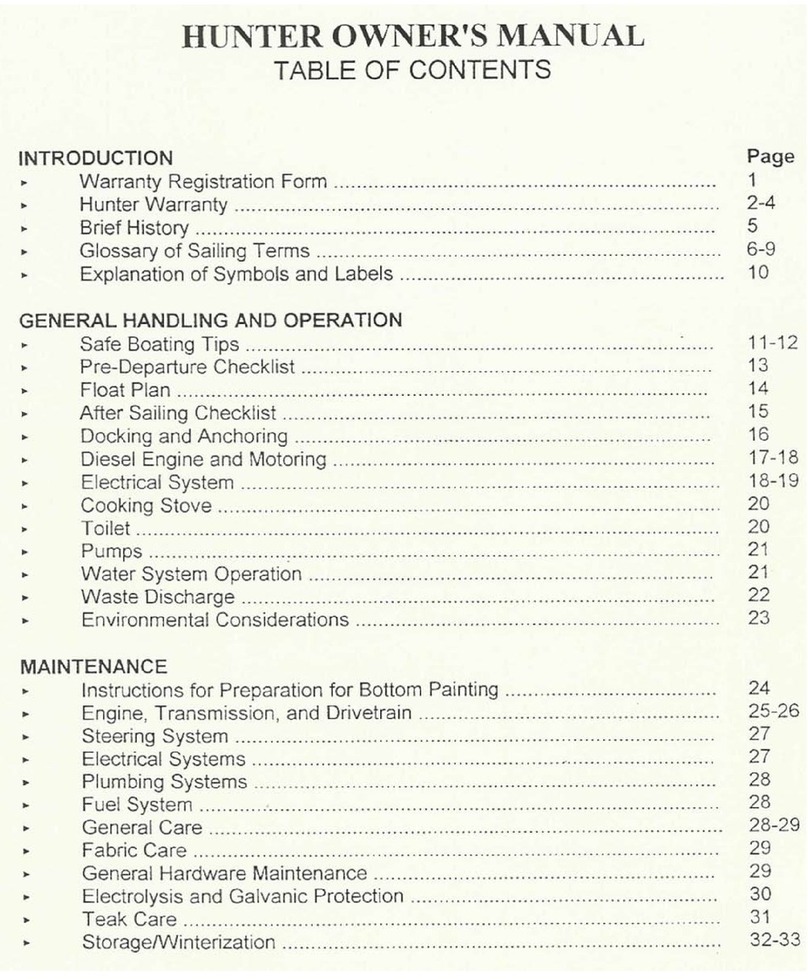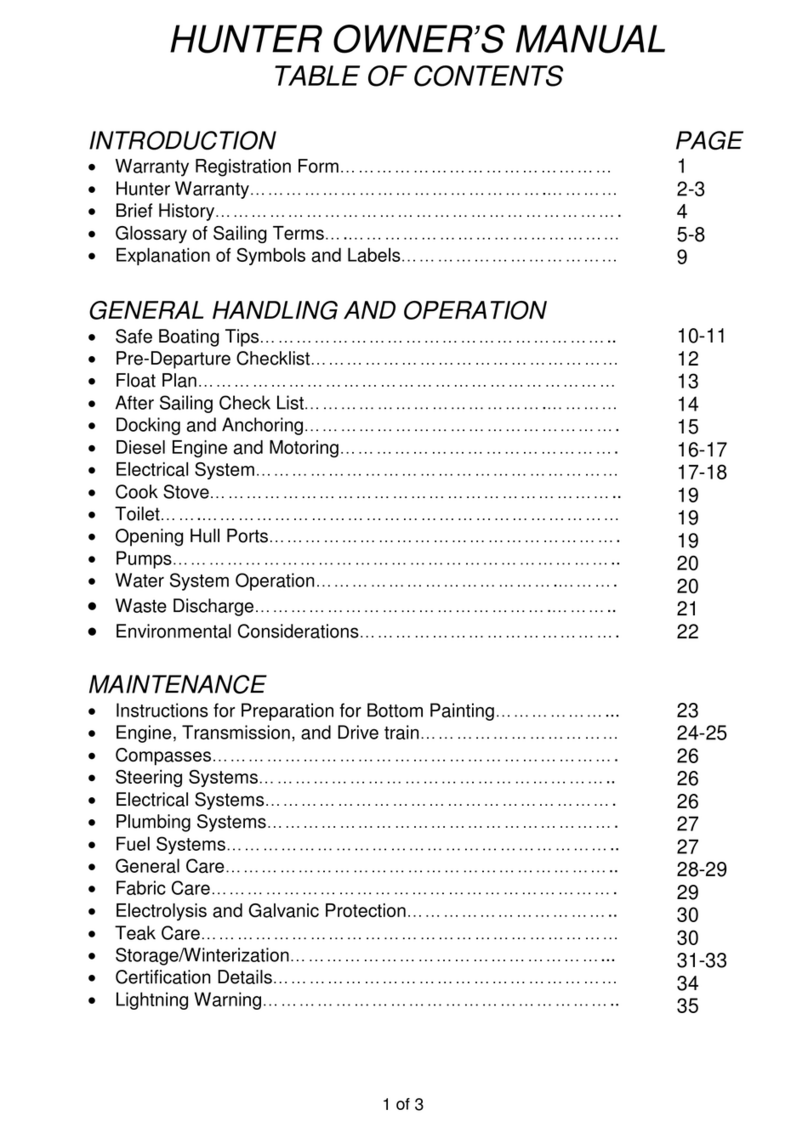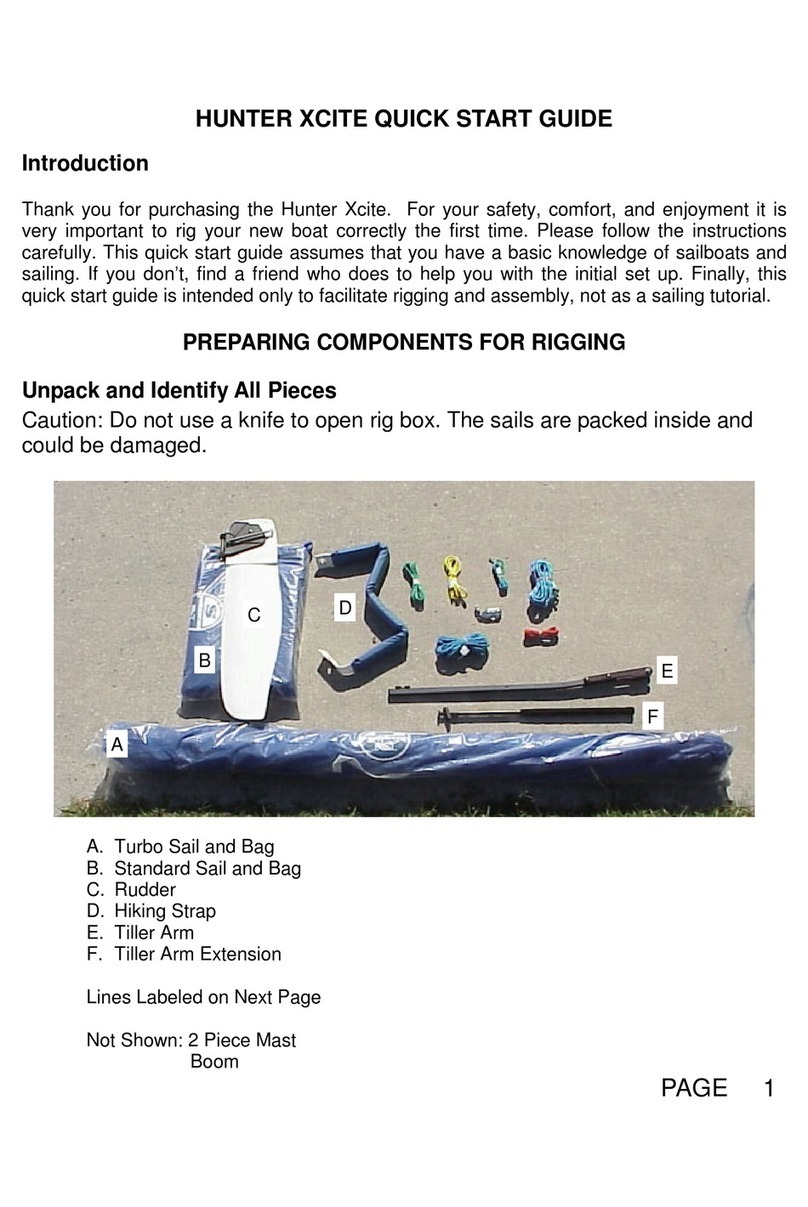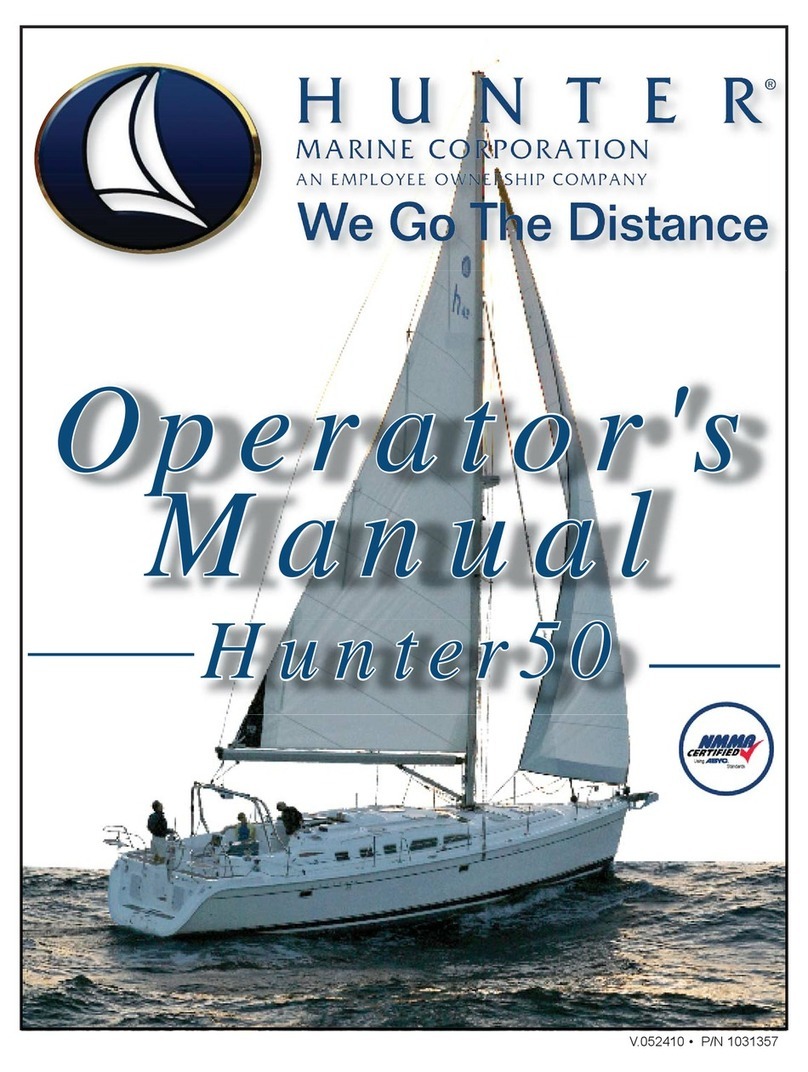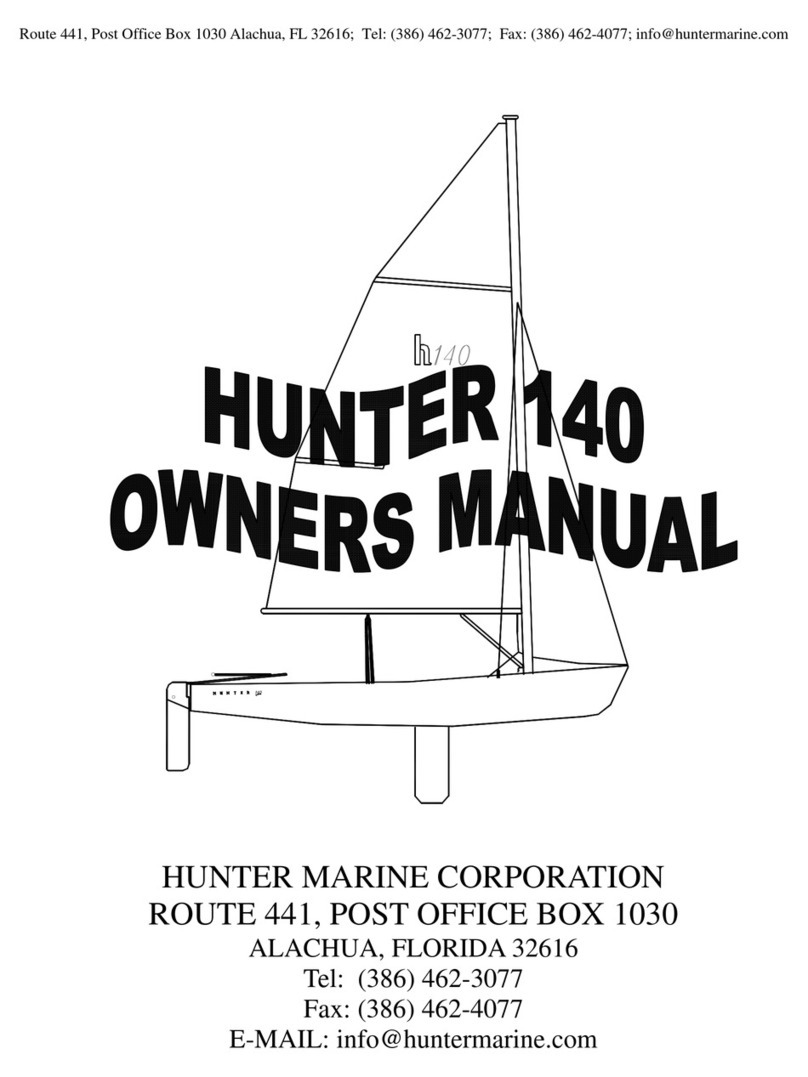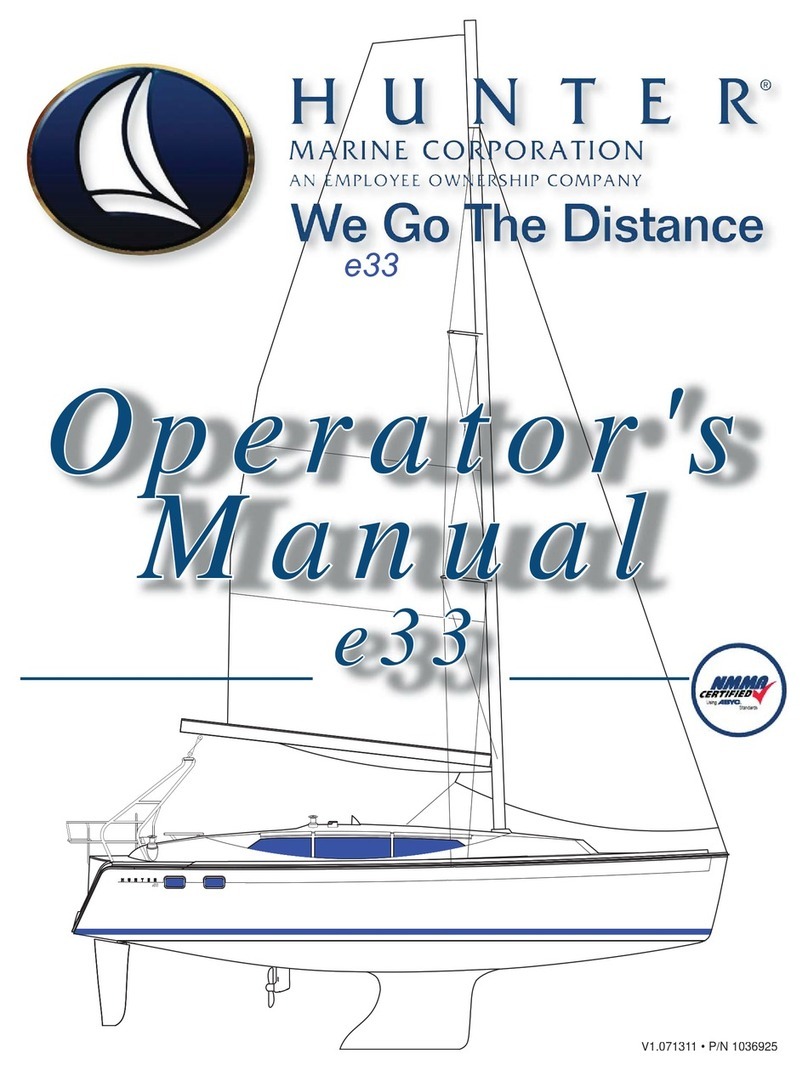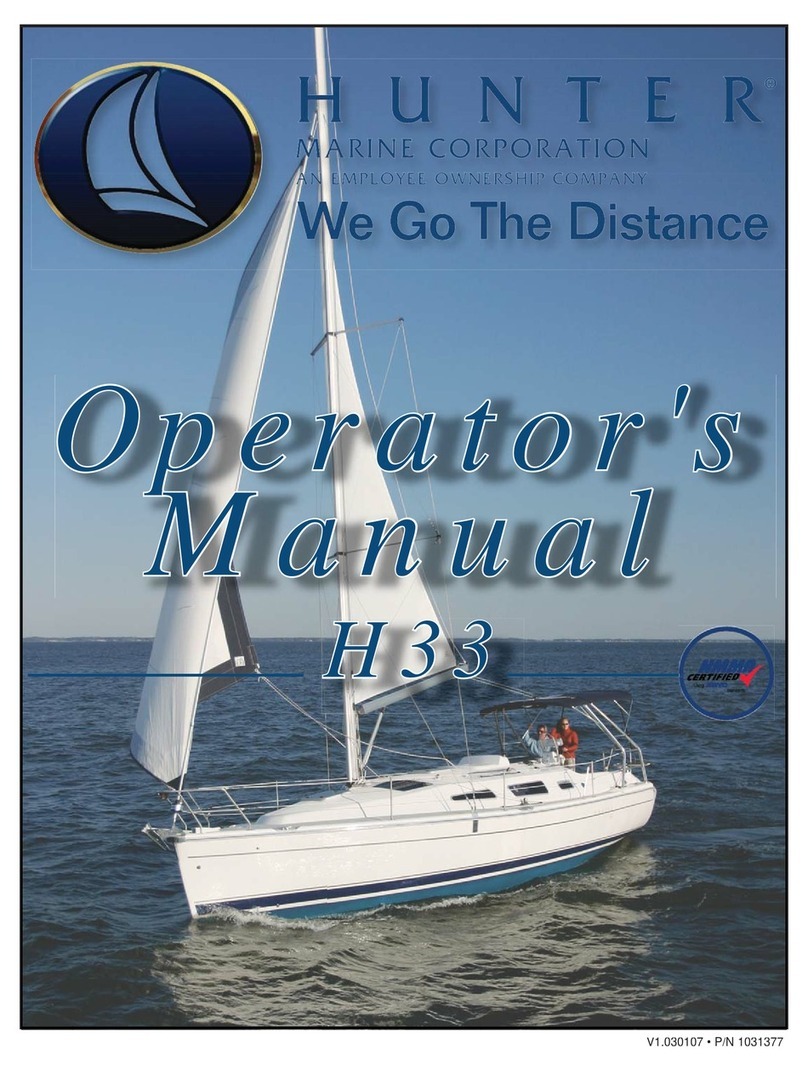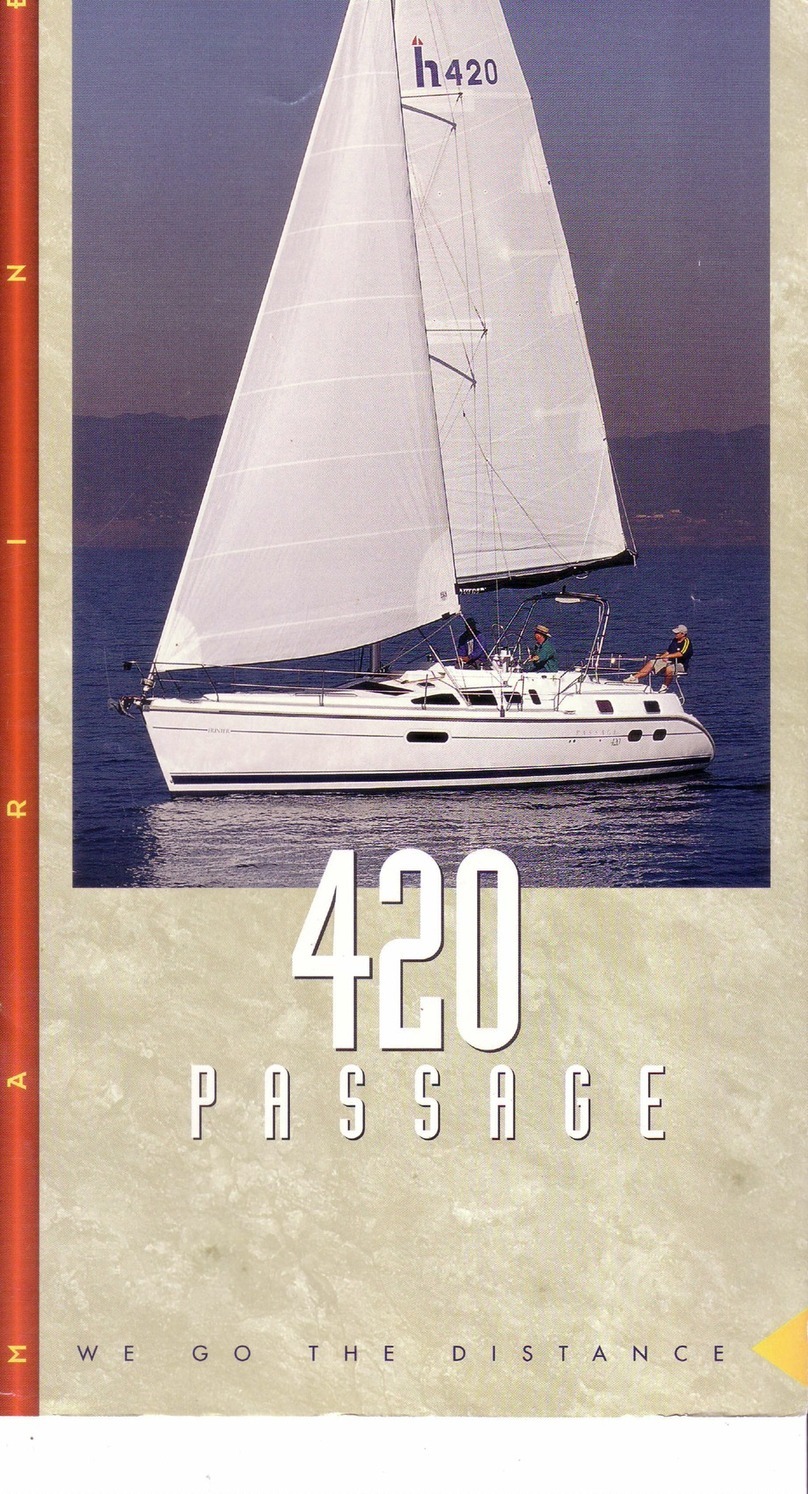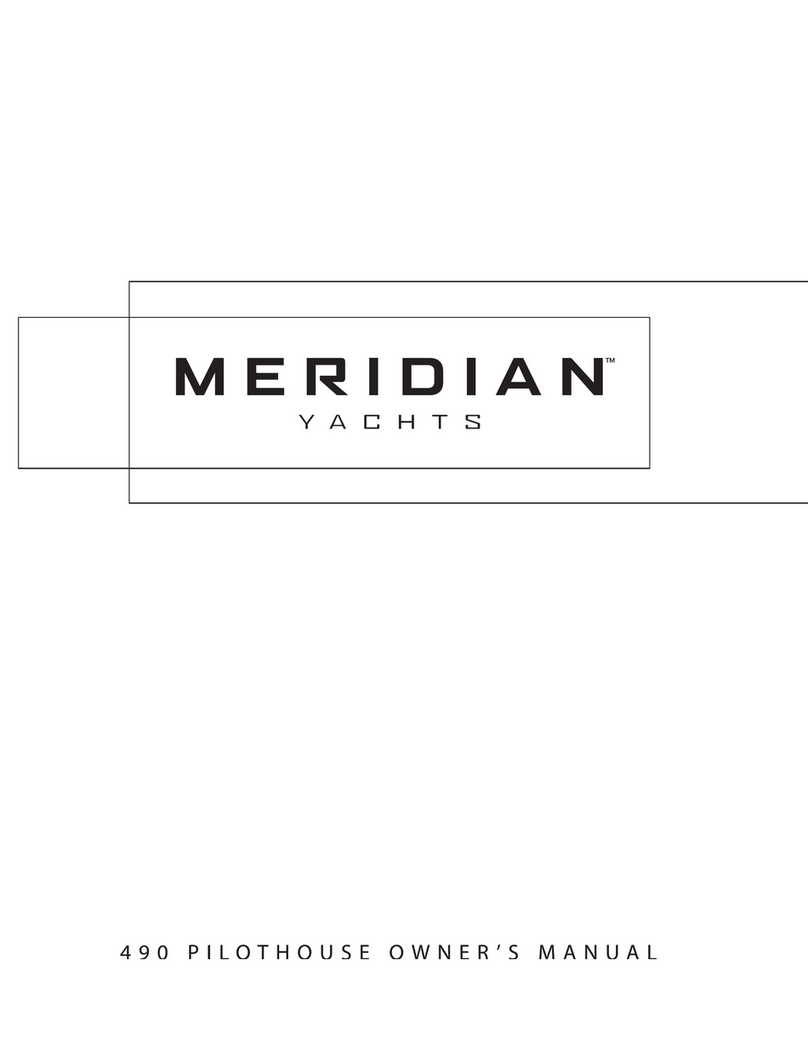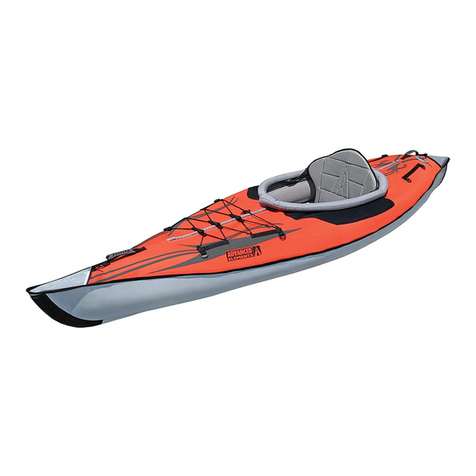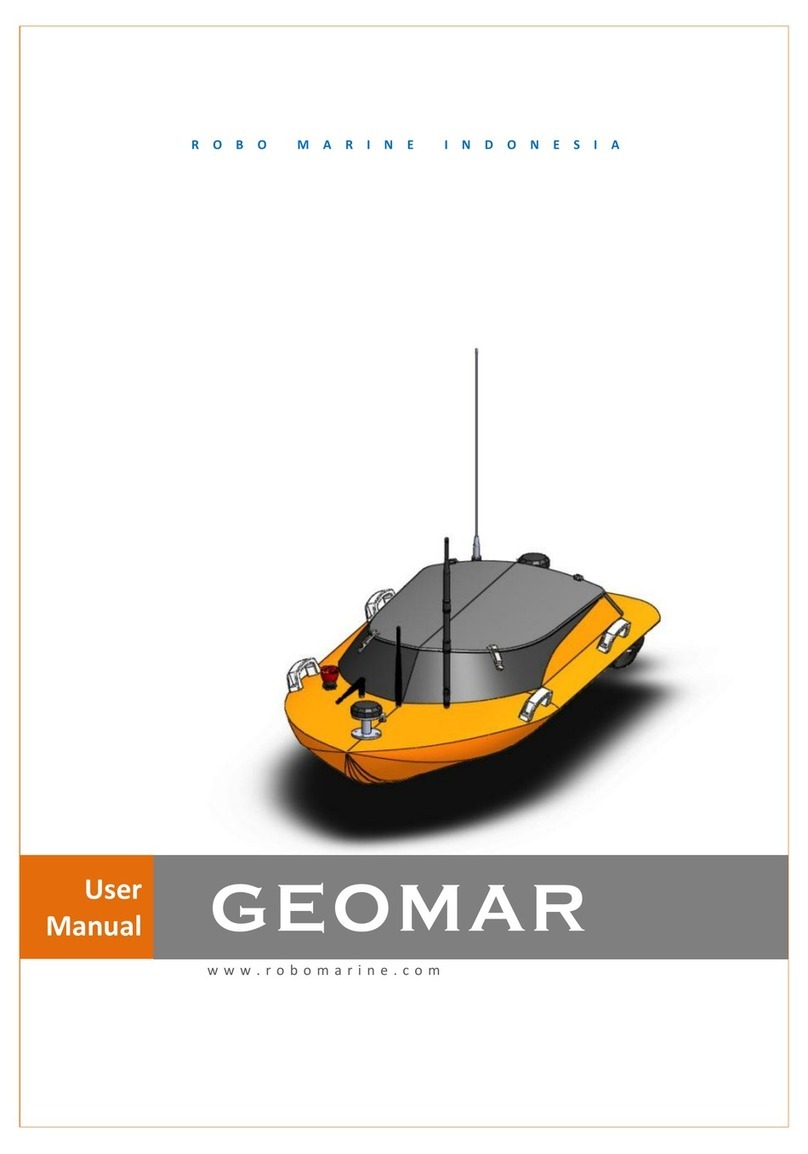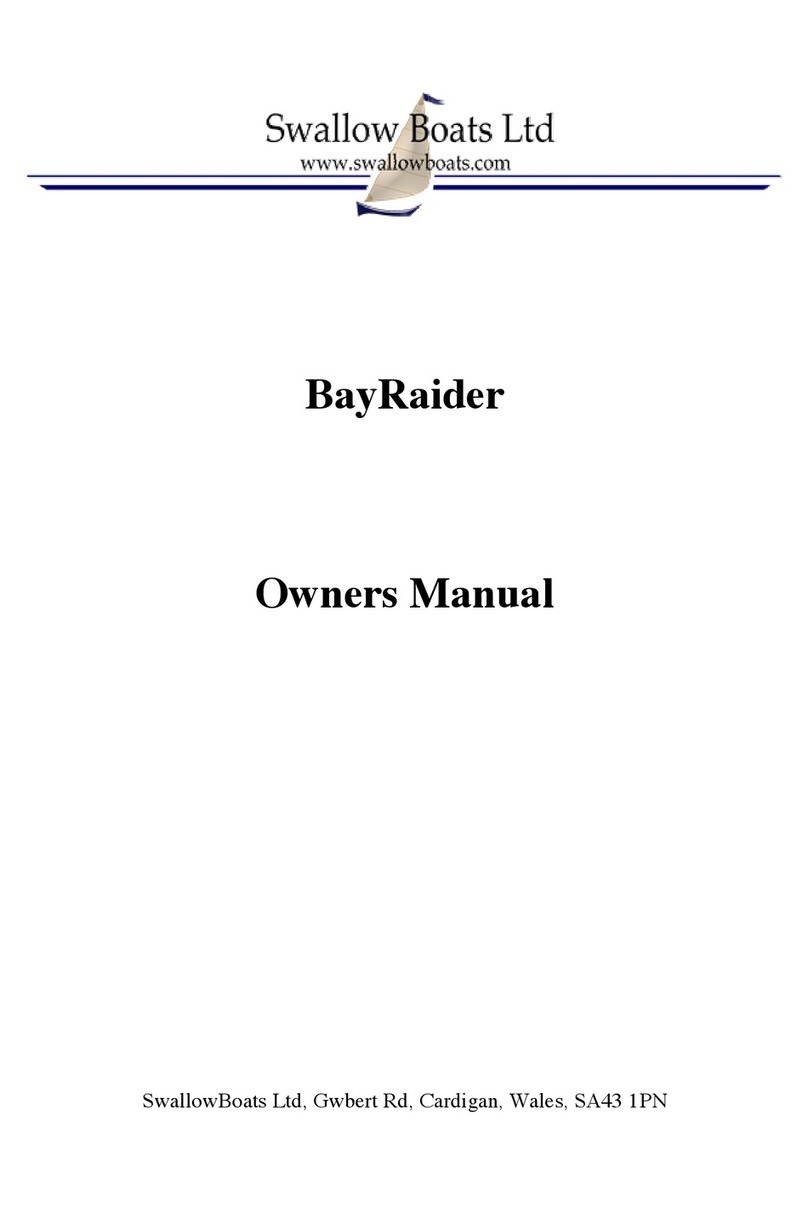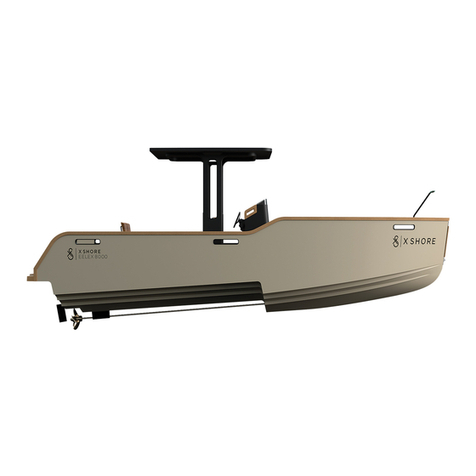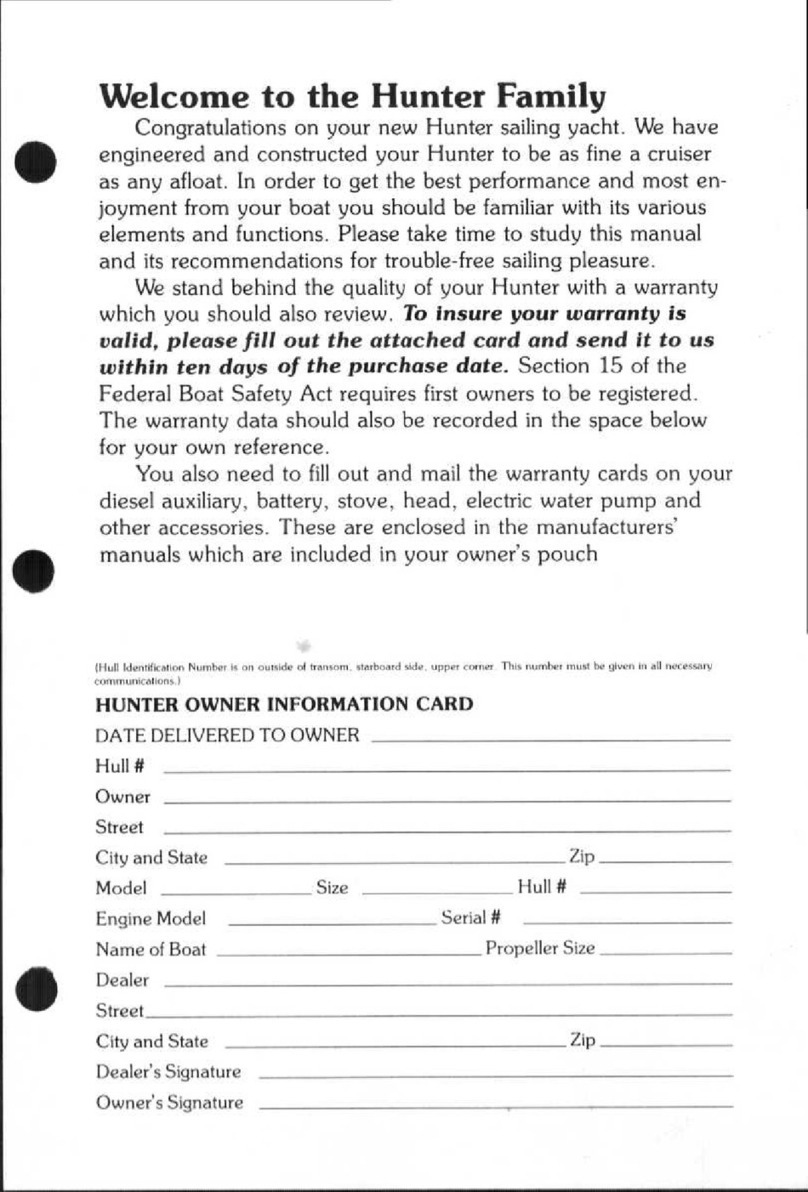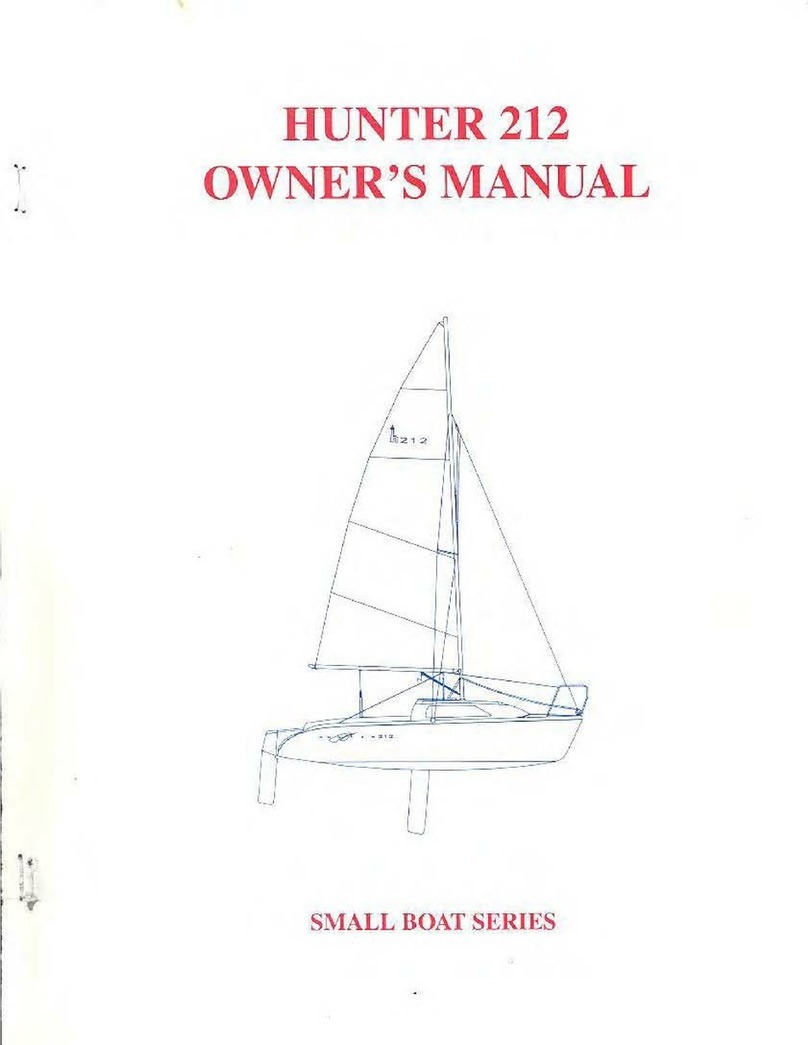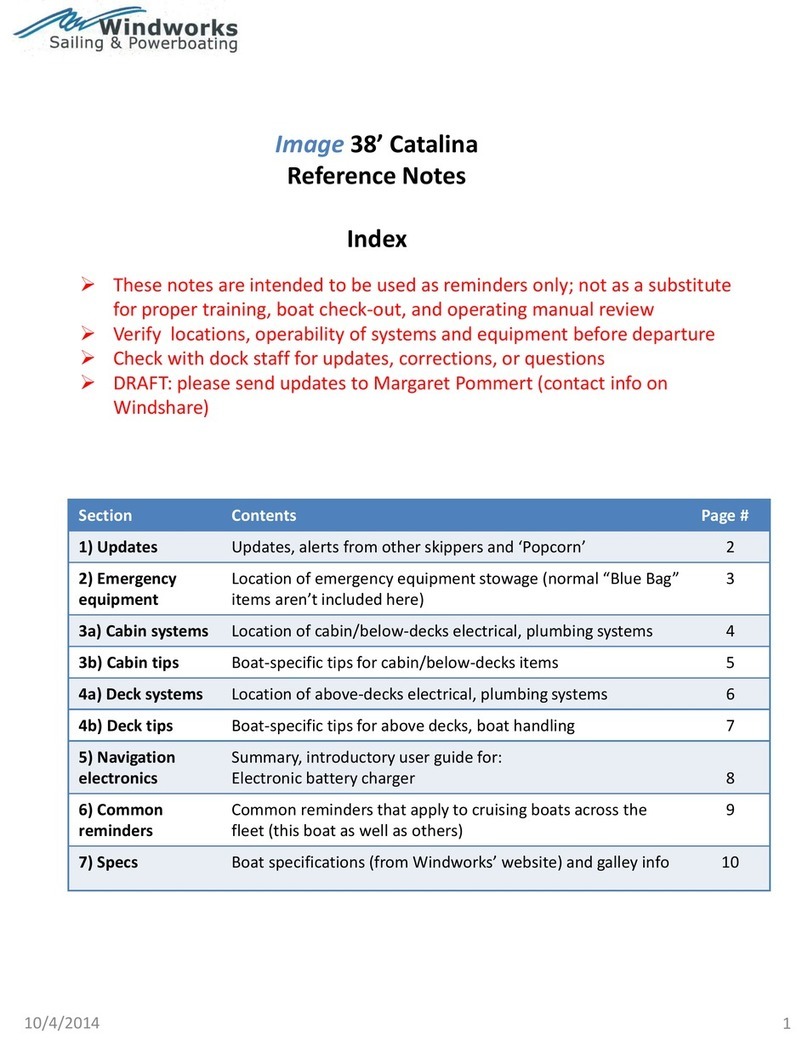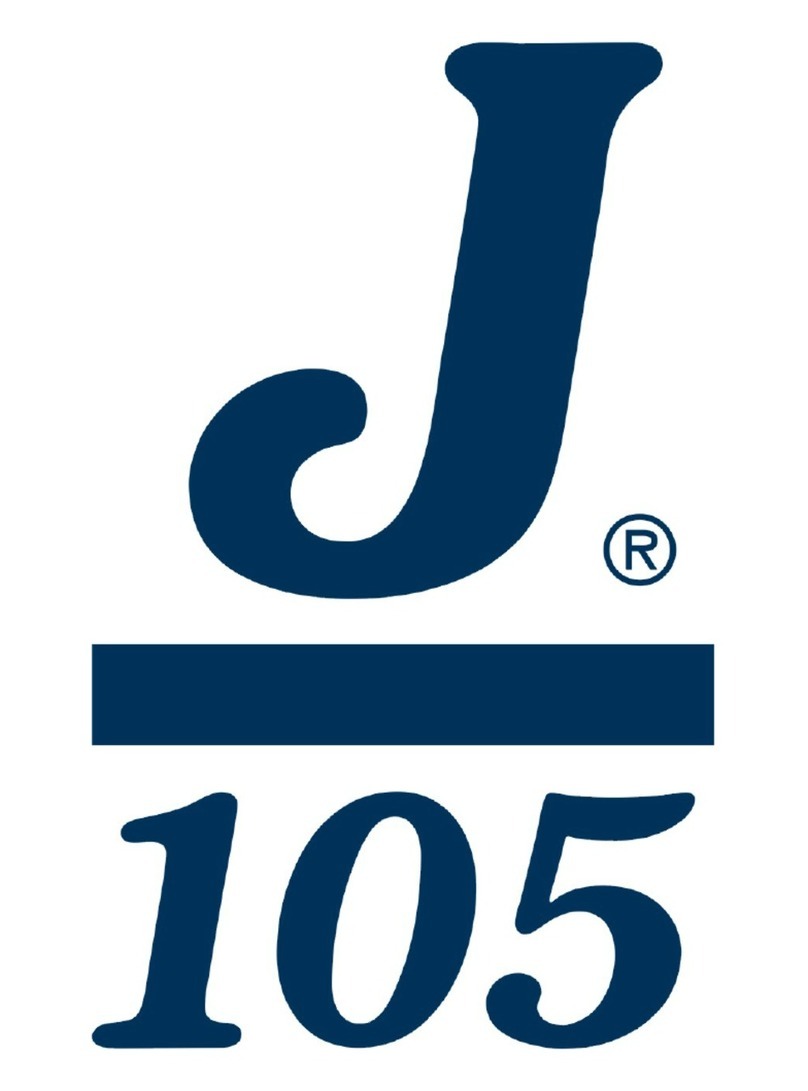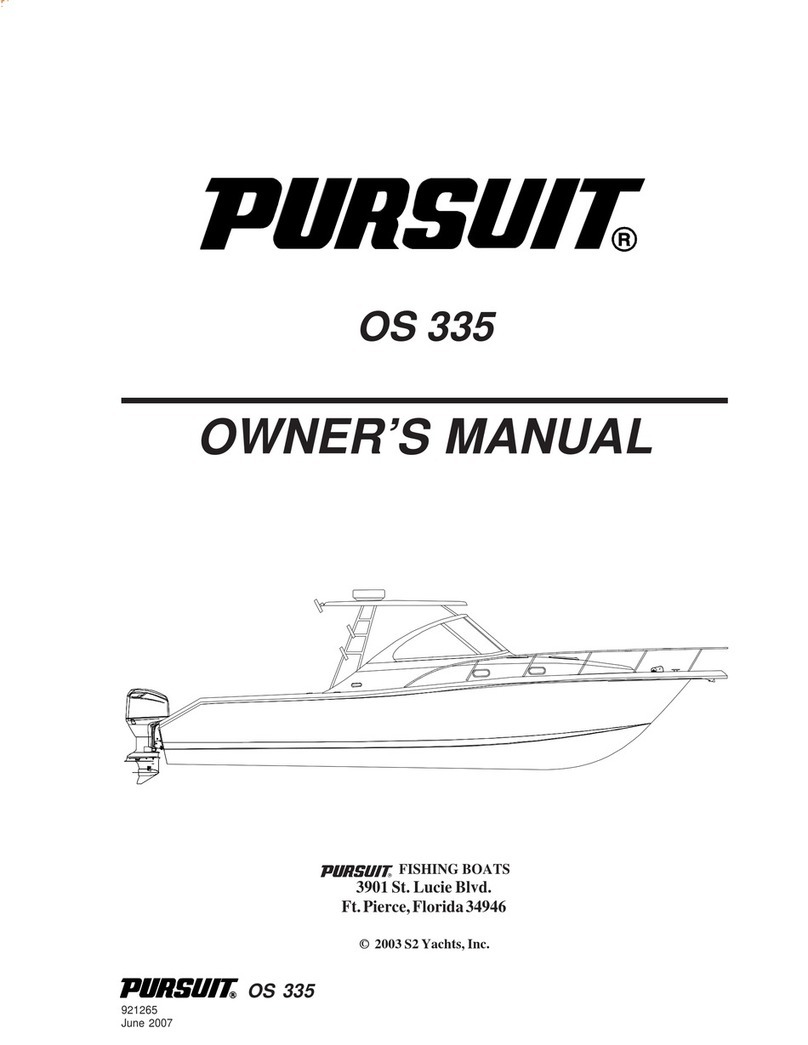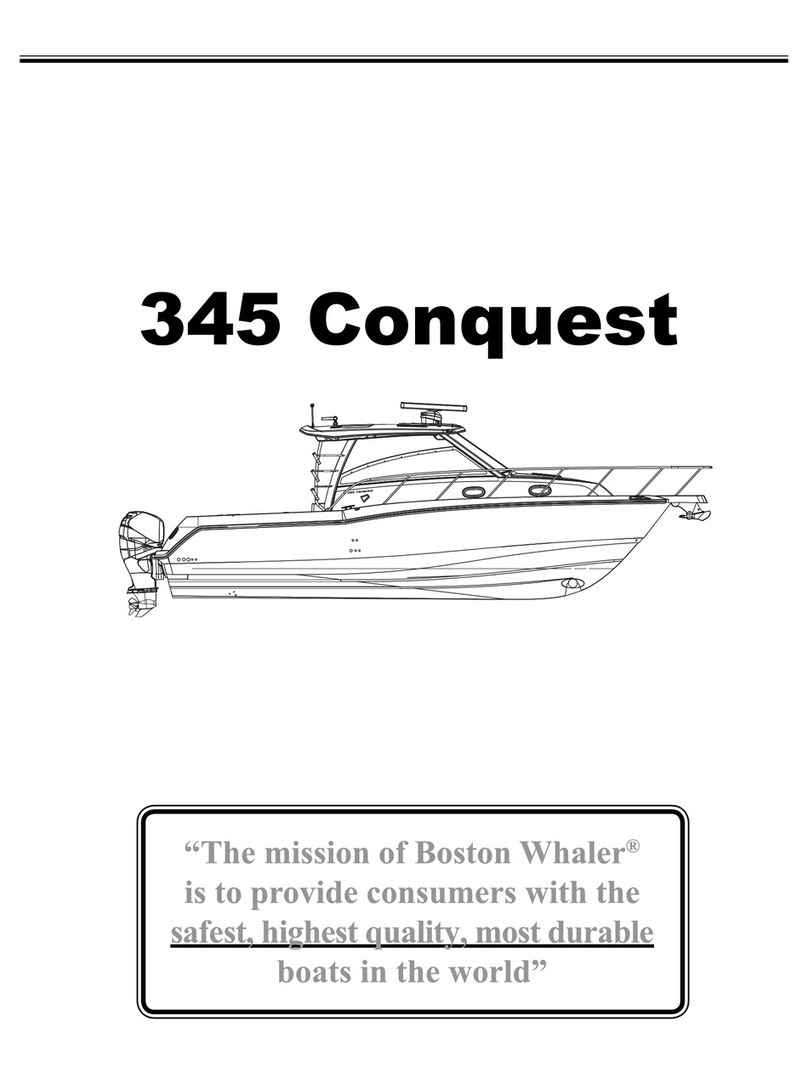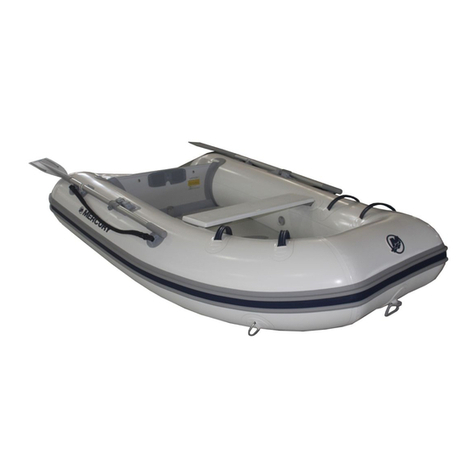
GLOSSARY OF SAILING TERMS
PAGE
A
Aback: describes a sail when the wind
strikes it on the lee side.
Abaft: towards the boat’s stern.
Abeam: at right angles to the center-
line of the boat.
Aft: at or near the stern.
Amidships: the center of the boat,
athwartships and fore and aft.
Anti-fouling: a poisonous paint
compound used to protect the
underwater part of a hull from marine
growths.
Apparent wind: The direction and
speed of the wind felt by the crew. It
is a combination of true wind and that
created by the movement of the boat.
Astern: behind the boat; to go astern
is to drive the boat in reverse.
Athwartships: at right angles to the
fore and aft line of the boat.
B
Back: when a wind backs, it shifts
anticlockwise.
Back a sail: to sheet it to windward
so that the wind fills on the side that
is normally to leeward.
Backstay: a stay that supports the
mast from aft and prevents its forward
movement.
Ballast: extra weight, usually lead or
iron, placed low in the boat or
externally on the keel to provide
stability.
Ballast keel: a mass of ballast bolted
to the keel to increase stability and
prevent a keel boat from capsizing.
Batten: a light, flexible strip fed into a
batten pocket at the leech of the sail
to support the roach.
Beam: 1, the maximum breadth of a
boat; 2, a transverse member that
supports the deck; 3, on the beam
means that an object is at right
angles to the centerline.
Bear away: to steer the boat away
from the wind.
Bearing: the direction of an object
from an observer, measured in
degrees true or magnetic.
Beat: to sail a zigzag course towards
the wind, close-hauled on alternate
tacks.
Delay: to make fast a rope around a
cleat, usually with a figure-of-eight
knot.
Bend: 1, to secure a sail to a spar
before hoisting; 2, to moor a boat; 3,
a sleeping place on board.
Bight: a bend or loop in a rope.
Bilge: the lower, round part inside the
hull where the water collects.
Block: a pulley in a wooden or plastic
case, consisting of a sheave around
which a rope runs. It is used to
change the direction of pull.
Boot-topping: a narrow colored
stripe painted between the bottom
paint and the topside enamel.
Bottlescrew: see Rigging screw.
Broach: when a boat running
downwind slews broadside to the
wind and heels dangerously. It is
caused by heavy following seas or
helmsman’s error.
Broad reach: the point of sailing
between a beam reach and a run,
when the wind blows over a quarter.
Bulkhead: a partition wall in a boat
normally fitted athwartships
C
Caulk: to make the seams between
wooden planks watertight by filling
with cotton, oakum or a compound.
Cavitation: the formation of a vacuum
around a propeller, causing a loss in
efficiency.
Center-board: a board lowered
through a slot in the keel to reduce
leeway.
Center-line: center of the boat in a
fore and aft line.
Center of effort (COE): the point at
which all the forces acting on the sails
are concentrated.
Center of lateral resistance (CLR):
the underwater center of pressure
about which a boat pivots when
changing course.
Chain pawl: a short lug which drops
into a toothed rack to prevent the
anchor chain running back.
Chain plate: a metal plate bolted to
the boat to which the shrouds or
backstays are attached.
Chart datum: reference level on a
chart below which the tide is unlikely
to fall. Soundings are given below
chart datum. The datum level varies
according to country and area.
Chine: the line where the bottom of
the hull meets the side at an angle.
Cleat: a wooden, metal or plastic
fitting around which rope is secured.
Clevis pin: a locking pin through
which a split ring is passed to prevent
accidental withdraw.
Clew: the after, lower center of a sail
where the foot and leech meet.
Close-hauled: the point of sailing
closest to the wind; see also beat.
Close reach: the point of sailing
between close-hauled and a beam
reach, when the wind blows forward of
the beam.
Close-winded: describes a boat able
to sail very close to the wind.
Coaming: the raised structure
surrounding a hatch, cockpit, etc.,
which prevents water entering.
Cotter pin: soft, metal pin folded back
on itself to form an eye.
Course: the direction in which a
vessel is steered, usually given in
degrees; true, magnetic or compass.
Cringle: 1, a rope loop, found at
either end of a line of reef points; 2, an
eye in a sail.
D
Dead run: running with the wind
blowing exactly aft, in line with the
center-line.
Deviation: the difference between the
direction indicated by the compass
needle and the magnetic meridian;
caused by object aboard.
Displacement: 1, the weight of water
displaced by a boat is equal to the
weight of the boat; 2, a displacement
hull is one that displaces its own
weight in water and is only supported
by buoyancy, as opposed to a
planning hull which can exceed its
hull, or displacement, speed.
Downhaul: a rope fitted to pull down
a sail or spar.
Draft: the vertical distance from the
waterline to the lowest point of the
keel.
Drag: 1, an anchor drags when it fails
to hole; 2, the force of wind on the
sails, or water on the hull, which
impedes the boat’s progress.

